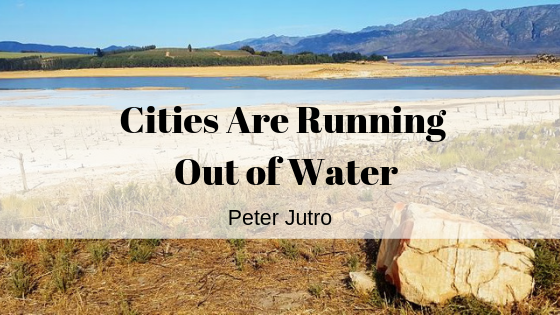Imagine having no water to drink or cook with, or for bathing, flushing toilets or watering pets. Imagine this situation going on for not just a day or two, but possibly long into the future. This is the dire situation that many cities around the world are facing right now. They are in severe danger of running out of water, some due to droughts, some due to weaker monsoon seasons, some due to El Nino, and some due to shrinking glaciers. In the U.S., we have our own water issues (Newark, New Jersey and Flint, Michigan are recent examples), but nothing compared to what these cities – some tourist cities – are experiencing. Let’s take a look at a few of the cities.
- Cairo, Egypt — This ancient country relies on the Nile River for its water supply. In fact, Eqypt gets over 90% of its water from this famous river. Yet, an increase in population and pollutants (e.g. landfills) threaten its livelihood. Also, the Nile has experienced a drop in water level according to Nader Nour El-Din, Professor of Soil and Water Resources at Cairo University. He claims the Nile is losing 31bn cubic meters of water annually. To add to this, the hydroelectric dam Ethiopia is building on the Blue Nile River may reduce the downstream water flow of the Nile.
- London, England — This city is in danger of running out of water in 25 years, according to The Business Insider. How can this be? An increase in population along with poor water management and climate change are the reasons. Further, James Bevan, Agency Chief for the British Environmental Agency, projects the water volume in some of Britain’s rivers could be reduced by 15% by the year 2050.
- Beijing, China — The scarcity of water is such a threat that the Chinese government built the South-to-North water diversion project. Water from the Yangtze River is pumped into the Northern regions to refill the aquifers, rivers, and lakes. The project has three routes: Eastern, Central, and Western. The Eastern and Central routes have been completed and the Western route is planned for completion by 2050. Although more water is being diverted to dry areas, the problem is that 40% of that water is polluted.
- Chennai, India — In 2019, Chennai, a city in the Indian State of Tamil Nadu formerly known as Madras, found four of its reservoirs essentially without water. The 2018 monsoon was unusually weak, and rainfall needed to replenish groundwater did not fall. Local river water is polluted, making it unusable for drinking water. As a result, water is being trucked to residents.
- Capetown, South Africa — Over the past two years, Capetown had to implement severe water restrictions as water in its reservoirs fell dramatically. The city managed to reduce daily consumption by about 50%, leading to a stabilization of the crisis. Capetown has been struggling with water limitations for some two decades, and its water future remains uncertain.
- São Paulo, Brazil — Five years ago, the city almost ran out of water as its reservoirs began to run dry. Last year, a severe drought caused residents to worry about the possibility of another water crisis. Here, the problems relate to some of the same causes, but also a different cause. As with other places, warming temperatures can cause increased intense rainfall, but also alternating water scarcity. Here, however, a major contributing issue is the degradation and disappearance of forested land upstream of São Paulo. Normally, forested land will buffer the effects of alternating seasons of drought and excess rain, and can filter water easing demands on treatment plants. As forests continue to degrade or disappear, the city becomes more vulnerable.
Implications of the Water Crisis
If more measures aren’t quickly taken to resolve the issues that caused the scarcity of water for these cities, there may be no water in the long-term. The effects, which may be felt worldwide, suggests that human suffering will become a growing issue. Contaminated water can cause more people to become sick and die. Businesses could be forced to shut down, thus affecting local and national economies. In addition, as we have begun to see in some places, people may resort to violence to secure scarcely available freshwater for themselves and their families.

